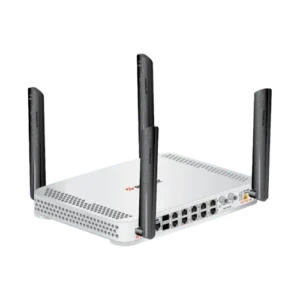Before investing in security, you may wonder which one is more useful to operate. We will show you the role of firewall, IPS, and IDS in the network.
WHAT IS THE BLOG ABOUT?
- WHAT ARE THE DIFFERENT SOLUTIONS FOR?
- HOW DO THEY WORK?
- CAN THEY BE USED TOGETHER?
Firewall, IPS and IDS differ in that a firewall acts as a traffic filter based on security rules, IPS actively blocks threats, and IDS monitors and warns of potential security breaches and incidents.
A firewall defines the boundaries of network traffic, blocking or allowing data based on predefined protocols. IDS monitors network activity and flags any irregularities for review without directly affecting the data flow. IPS plays an assertive role, not only detecting but also preventing identified threats from compromising the network.
What is a firewall?
A firewall is a network security solution that monitors and regulates traffic based on predefined security rules, allowing, denying, or rejecting traffic accordingly.
Firewalls act as checkpoints between internal networks and potential external threats. They analyze data packets based on specific security protocols. Depending on these protocols, firewalls determine whether to allow or deny the data.
All data on the Internet travels in network packets. Firewalls evaluate these packets according to a set of rules and block them if they do not match. These data packets, which are designed for Internet transit, contain essential information, including their source, destination, and other important data that determines their journey through the network.
What is an Intrusion Detection System (IDS)?
An intrusion detection system (IDS) identifies potential threats and vulnerabilities in network systems. An IDS examines network traffic and alerts administrators to suspicious activity without interfering with data transmission.
IDSs are located outside the main traffic flow. They typically operate by mirroring traffic to assess threats and preserve network performance by analyzing a duplicate data stream. This setup ensures that the IDS remains an unobstructed observer.
IDS systems come in various forms, including network intrusion detection systems (NIDS), host-based intrusion detection systems (HIDS), protocol-based (PIDS), application protocol-based (APIDS), and hybrid. There are also subsets of IDS detection methods. The two most common variants are signature-based IDS and anomaly-based IDS.
An IDS distinguishes between normal network operations and abnormal, potentially harmful activity. It does this by evaluating traffic for known patterns of abuse and unusual behavior, focusing on inconsistencies in network protocols and application behavior.
What is an Intrusion Prevention System (IPS)?
Intrusion prevention systems (IPS) are dynamic security solutions that intercept and analyze malicious traffic. They work proactively to mitigate threats before they penetrate network defenses. This reduces the workload on security teams.
IPS devices are particularly effective at identifying and stopping attempts to exploit vulnerabilities. They act quickly to prevent these threats, often bridging the gap between the vulnerability and the deployment of a patch. As network security evolves, IPS functions are integrated into broader systems, such as unified threat management tools and next-generation firewalls. Modern IPS devices also extend to cloud-based services.
IPS is placed in the direct path of network traffic. This allows IPS to detect and respond to threats in real time, unlike the passive monitoring approach of its predecessor, IDS. IPS typically sits just beyond the firewall and inspects incoming data and takes automated actions when necessary. IPS systems can raise alerts, drop malicious data, block source addresses, and reroute connections to prevent further attacks.
To minimize false positives, IPS systems distinguish between real threats and benign data. Intrusion prevention systems achieve this using a variety of techniques, including signature-based detection, which relies on known patterns of exploits; anomaly-based detection, which compares network activity to established baselines; and policy-based detection, which enforces specific security rules configured by administrators. These methods ensure that only authorized access is granted.
Firewall vs. Intrusion Prevention System vs. Intrusion Detection System?
Let’s compare them!
| Firewall | IPS | IDS | |
| Goal | A network security tool that filters incoming and outgoing traffic based on predefined security rules. | A tool that monitors and prevents identified threats in real time by analyzing traffic. | A system that monitors network or system activities for malicious activity or policy violations. |
| Operation | Filters traffic based on rules applied to addresses and port numbers. | Scans traffic for attacks in real time and intervenes to stop them when detected. | Monitors traffic and generates alerts, looking for attack patterns or anomalies. |
| Configuration mode | It operates in inline or transparent mode at the network edge. | It is usually located inline, after the firewall, within the network layer. | It usually operates in a monitoring mode, not in line with traffic. |
| Traffic management | It should be the primary route for network traffic. | Placed after the firewall to inspect filtered traffic. | Analyzes traffic after it passes through the firewall. |
| Placement | It is located at the edge of the network as an initial line of defense. | It is located immediately after the firewall, before the internal network. | Located within the network, typically after the IPS for deeper traffic analysis. |
| Response to unauthorized traffic | It blocks or allows traffic based on the evaluation of the rules. | Actively prevents detected threats from advancing. | It issues alerts when it detects suspicious activities. |
Can a Firewall Interoperate with an IDS or IPS?
Firewalls, intrusion detection systems, and intrusion prevention systems are essential network security components. Together with today’s modern solutions, they can provide a comprehensive security framework.
A firewall serves as the primary barrier at the edge of the network, monitoring and regulating incoming and outgoing traffic based on predefined rules. Working with a firewall, an IDS analyzes traffic patterns to detect anomalies, and an IPS takes preventive action against identified threats.
The collaboration between the systems increases security. A firewall filters initial traffic, while an IDS and IPS analyze the filtered traffic for potential threats. This multi-layered approach ensures that even if a threat bypasses the firewall, an IDS can alert administrators to suspicious activity, and an IPS can prevent the threat from causing harm. Such integration enables a more robust security posture that can respond to a wide range of security events.
Recent developments in network security have led to the convergence of these tools into unified solutions. Next-generation firewalls combine the functionality of traditional firewalls with IDS and IPS capabilities, creating a single, more effective point of policy enforcement. These unified systems simplify the security infrastructure and can enforce policies based on comprehensive data, including user identity, enabling more nuanced security controls.
Palo Alto Networks firewalls are just that. To learn more about firewalling options or for implementation advice, contact our engineers.
Hardware firewalls with machine learning, artificial intelligence, and cloud-based management for critical business solutions for remote workgroups, small businesses, branch offices, and mid-sized and large enterprises.
The Palo Alto Networks PA-415-5G NGFW hardware firewall with 5G module is the world’s first ML-enabled next-generation mobile firewall, enabling you to block unknown threats, monitor all devices on your network – including IoT, and reduce errors with automatic policy recommendations.





